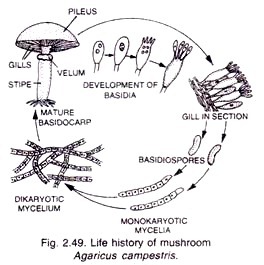The simplest theory is the stationary film theory as proposed by Whitman and depicted in Fig. 5.2.
A stationary liquid film is supposed to remain surrounding the cell, and it offers an additional resistance to oxygen uptake by the cells.
The magnitude of this resistance can be conceived from the data on the respiration in yeast cells provided by Finn. A maximum concentration difference of 2 x 10-7 molar (M) is required to overcome this resistance.
In agitated liquid suspension, stationary liquid film thickness and, consequently, concentration difference across it would be smaller. The concentration difference is considered negligible compared to DOT (Dissolved Oxygen Tension) value of about 10-6 to 10-5 M, at which respiration rate starts to be oxygen limited.
The possibility of penetration of stationary liquid film at the gas-liquid interface by cells is reported, which suggested further that cells may concentrate on the interface owing to the surface activity of the cells. The overall effect of such concentrations of cells on the interface is to decrease the film thickness, thereby increasing KLa. The validity of such an approach, however, still awaits experimental verification.

